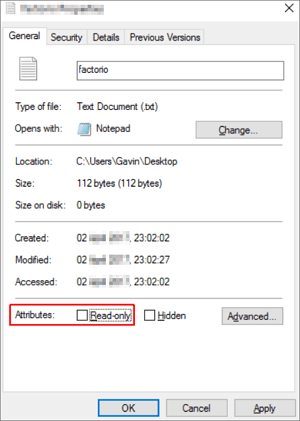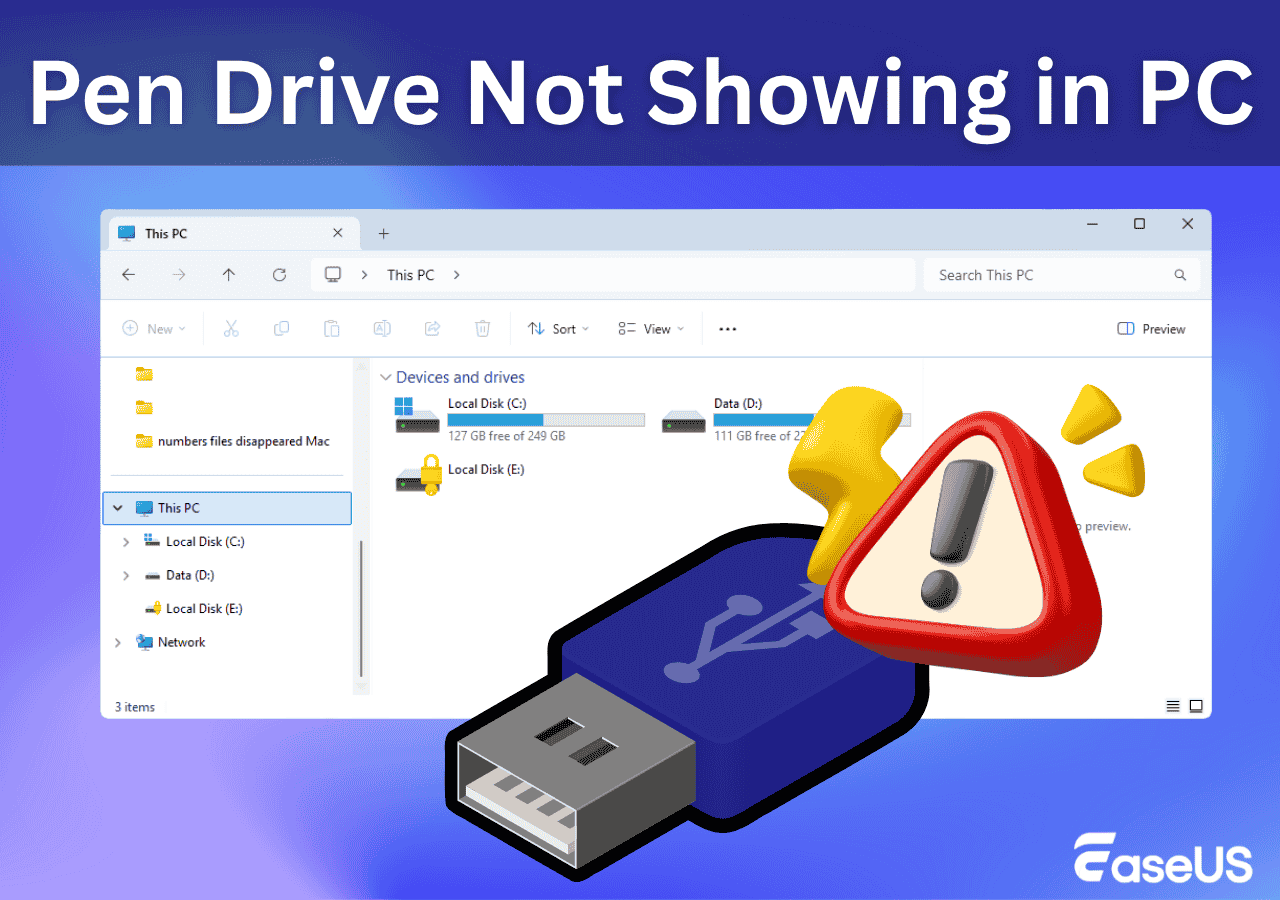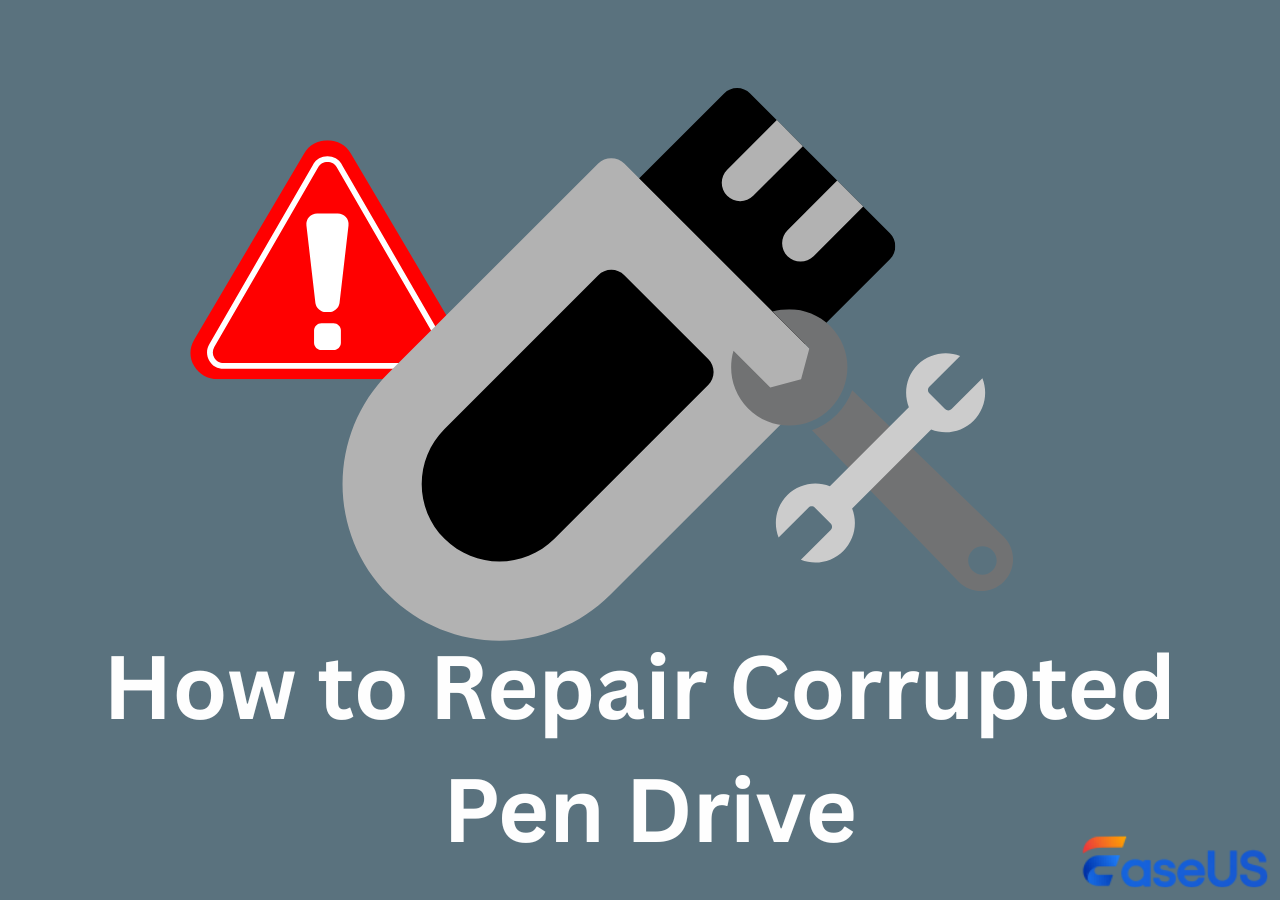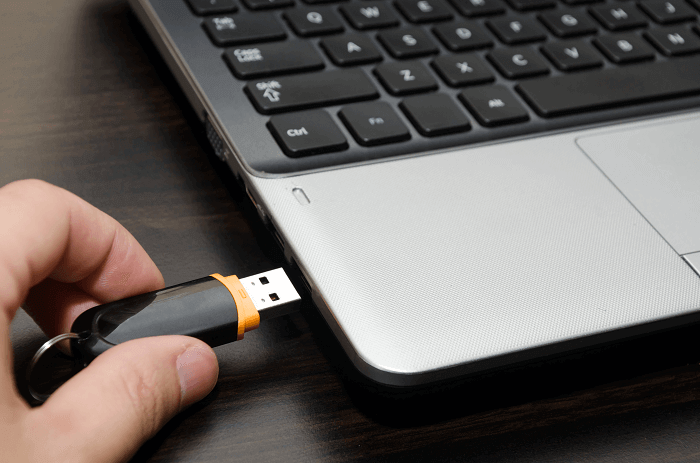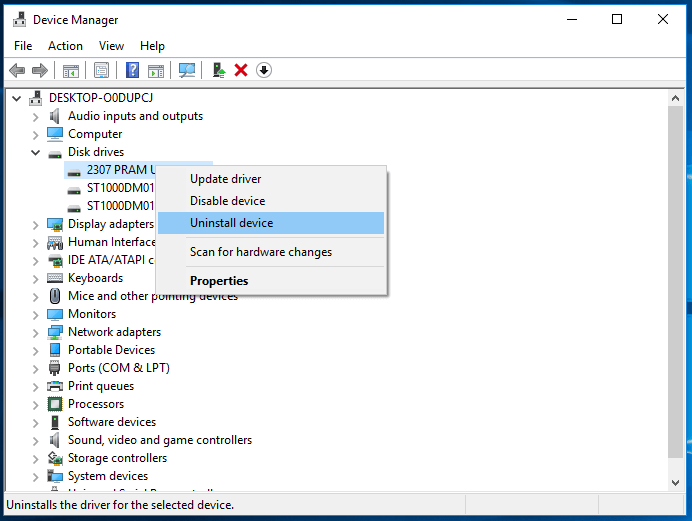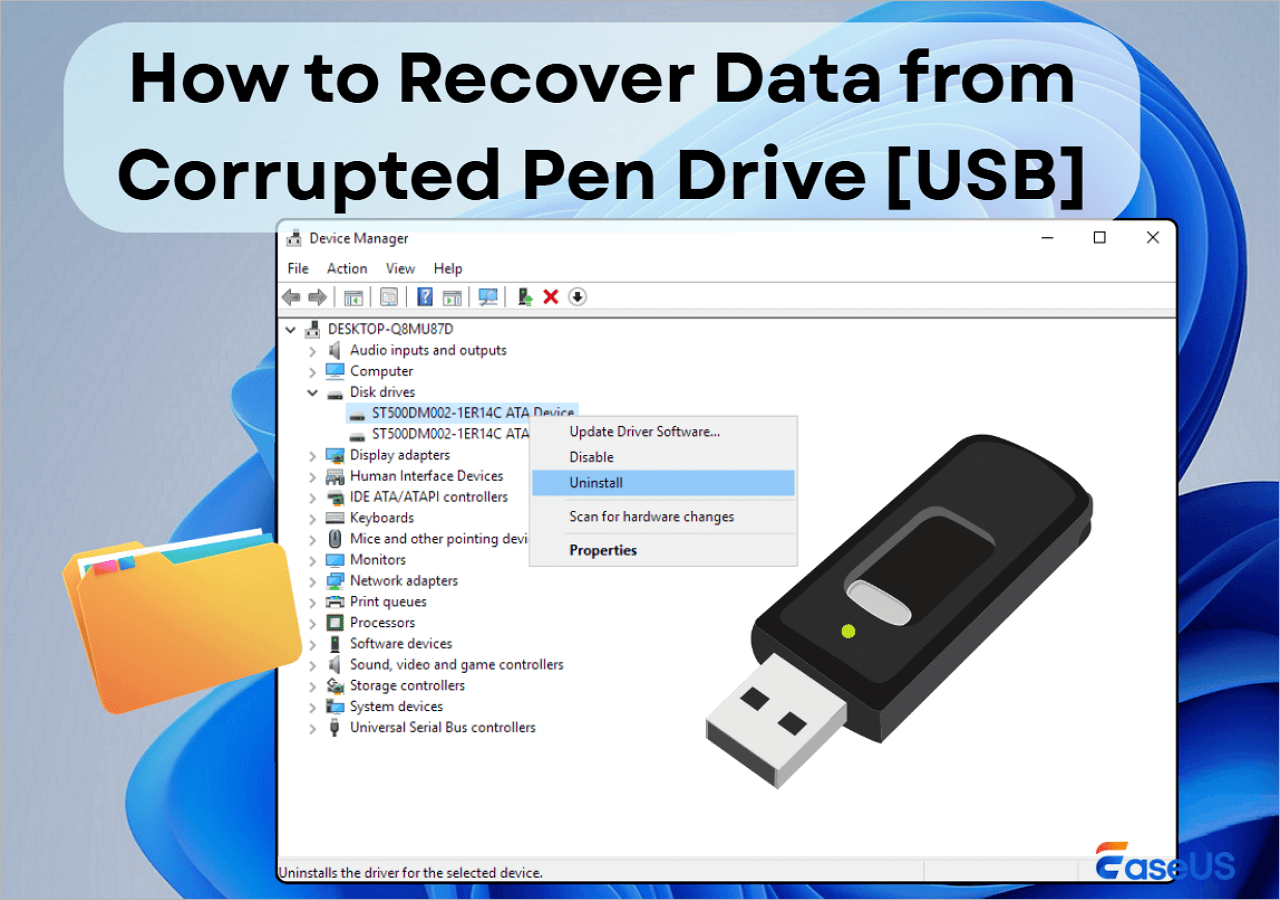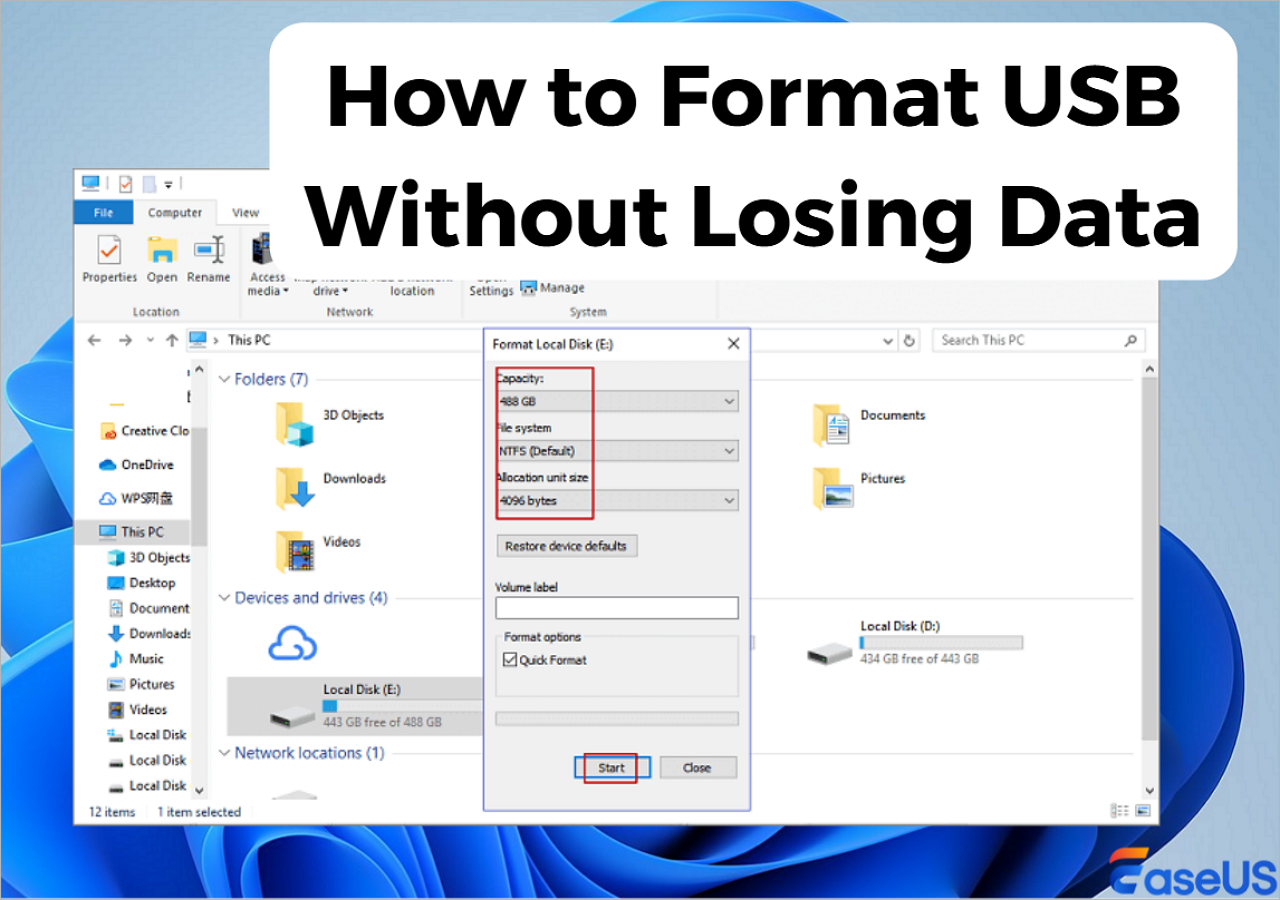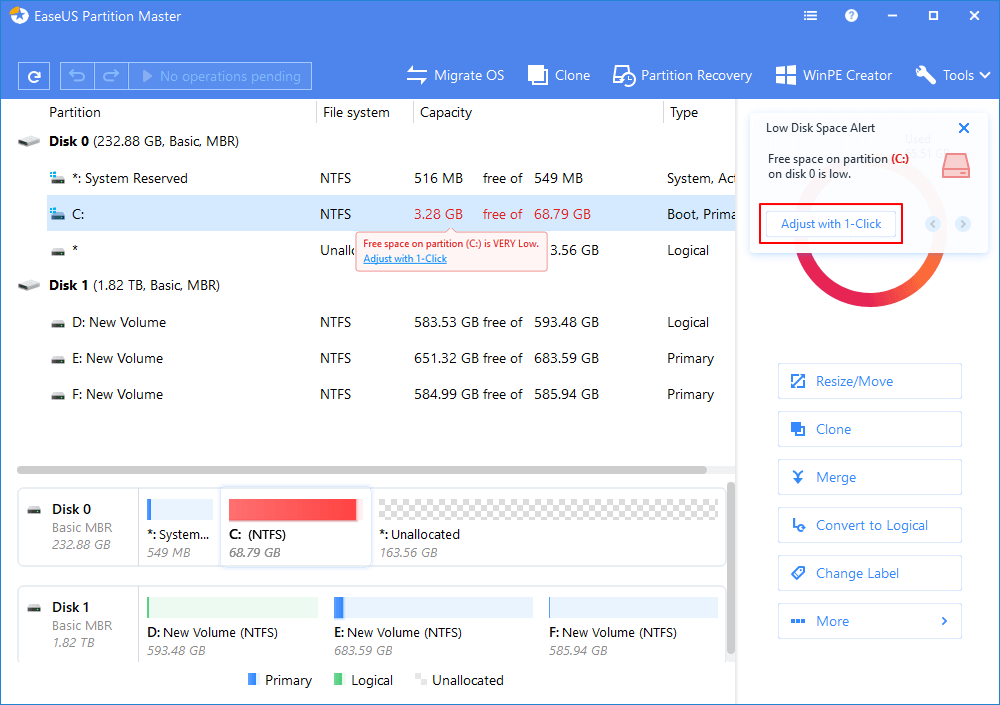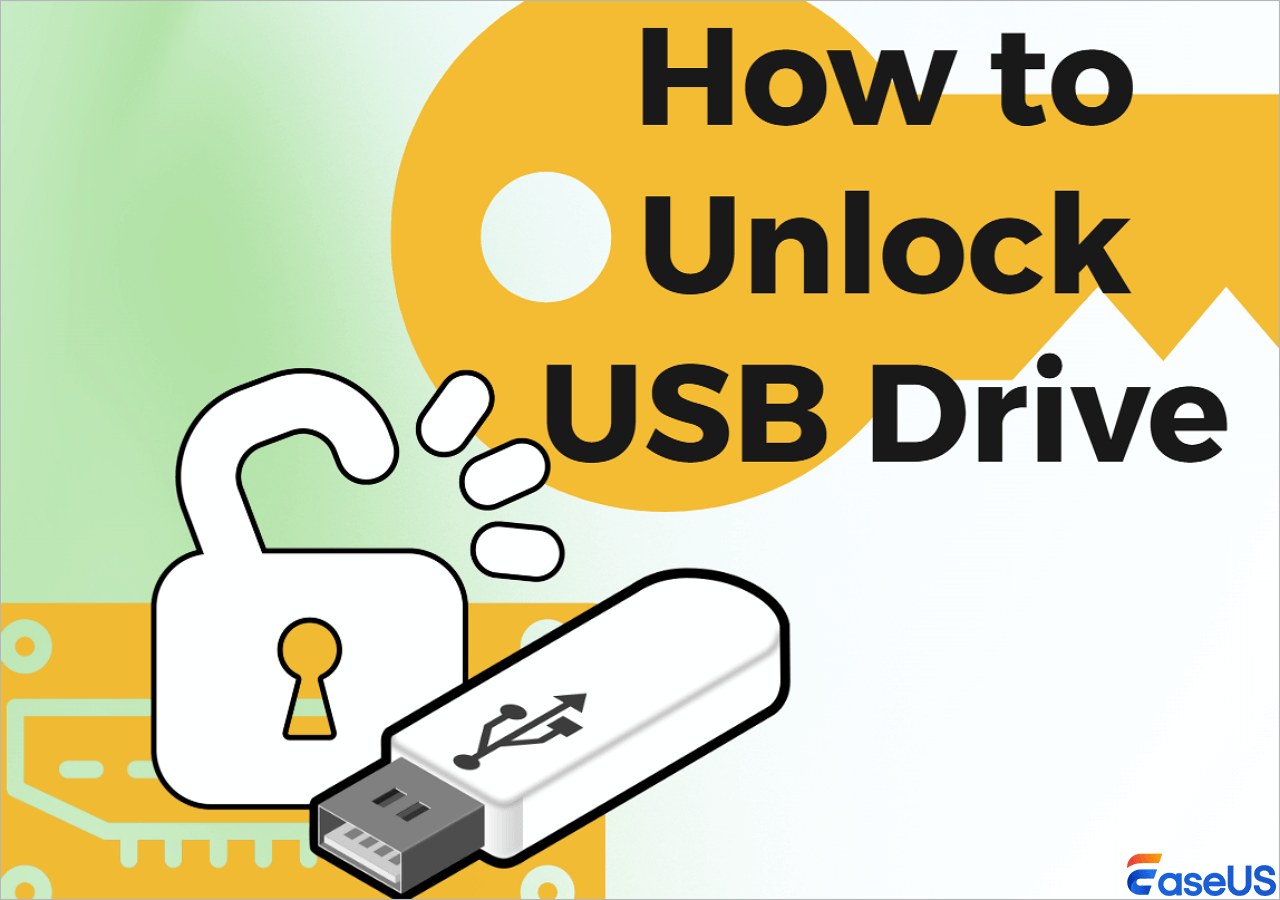-
![]()
-
![]() RAW USB Recovery | How to Recover Data from RAW USB Drive
RAW USB Recovery | How to Recover Data from RAW USB Drive January 07,2026
January 07,2026 6 min read
6 min read -
![]() Fix 'USB No Media' Error in Disk Management (6 Practical Ways)
Fix 'USB No Media' Error in Disk Management (6 Practical Ways) January 06,2026
January 06,2026 6 min read
6 min read -
![]()
-
![]() Free | How to Recover Files from Formatted USB/Pen Drive
Free | How to Recover Files from Formatted USB/Pen Drive December 21,2025
December 21,2025 6 min read
6 min read -
![]() Fix USB Drive Not Showing Up in Windows10/11 | 8 Excellent Ways
Fix USB Drive Not Showing Up in Windows10/11 | 8 Excellent Ways December 12,2025
December 12,2025 6 min read
6 min read -
![]() How to Recover Data from Corrupted USB Drive [Pen Drive]
How to Recover Data from Corrupted USB Drive [Pen Drive] December 12,2025
December 12,2025 6 min read
6 min read -
![]() How to Format a Flash Drive Without Losing Data (Complete Guide)
How to Format a Flash Drive Without Losing Data (Complete Guide) January 06,2026
January 06,2026 6 min read
6 min read -
![]()
-
![]() How to Unlock USB Drive, Decrypt It and Restore Lost Data
How to Unlock USB Drive, Decrypt It and Restore Lost Data January 07,2026
January 07,2026 6 min read
6 min read
Page Table of Contents
PAGE CONTENT:
I was trying to copy photos from my Canon camera's SD card to Windows 11 laptop, but got 'The disk is write protected' error. I can't edit, delete, or save new files. My travel photos are stuck! Tried reinserting and restarting, but nothing works. Any way to fix this without losing data?" - Reddit r/techsupport
Don't panic if you see the USB drive is write-protected. You can fix this by either removing write protection or using another disk. This works with USB drives, SD cards, and internal and external hard drives.
📌 AIO Core Guide
- Error Causes: Physical lock, read-only attribute, BitLocker encryption, virus infection, disk corruption, permission misconfiguration
- Core Solution: Disable write protection (hardware/software) > Recover lost data > Format (if needed)
- Supported Devices: USB flash drive, Micro SD card, Seagate/WD external hard drive, internal HDD/SSD, memory card
What Is Write Protection & Common Triggers
Write protection is a security feature that sets storage devices to "read-only" mode. It prevents accidental file deletion, modification, or virus attacks by blocking write operations—you can view files but can’t make any changes.
🔵Common Trigger Scenarios:
| Physical Lock: | USB/SD card has a physical switch toggled to "Lock" (most common for SD cards). |
| Read-Only Attribute: | The disk is set to read-only via system settings or the command line. |
| BitLocker Encryption: | Enabled BitLocker to block write operations without decrypting the partition. |
| Virus/Malware: | Third-party encryption software or viruses modify disk settings. |
| Disk Corruption: | Bad sectors or file system errors (e.g., RAW format) trigger protection. |
| Permission Misconfiguration: | Windows registry or group policy incorrectly enables write protection. |
How to Fix The Disk Is Write-Protected in Windows 11/10/8/7
In this section, we'll walk you through disabling write protection on a hard drive or USB drive in Windows 11/10/8/7. We'll remove write protection from a USB drive in the following example.
Note: The fixes are listed from easiest to most complex. Follow them one by one to remove write protection from your USB flash drive, memory card, or computer HDD/SSD. If you know little about computers, don't worry. You can resort to the manual disk repair and data recovery services from EaseUS. Our professional technical team can help you solve system-related problems, including system failure, BSOD, unbootable devices, etc.
Consult with EaseUS data recovery experts for one-on-one manual recovery service. We could offer the following benefits after FREE diagnosis:
- Fix Windows boot issues, including BSOD
- Fix Windows error and configure Windows environment
- Restore the system when it fails to boot
- Optimize Windows computer to make it run quickly
If you want to know the selection and details of this year's best data recovery software, click this link.
Fix 1. Remove Write Protection with Physical Lock Switch
Sometimes, when the USB drive or SD card physical switch is locked, the device becomes write-protected on all PCs and devices you connect to. Let's see how to use the physical control to remove the protection from SD card/USB:
Step 1. Locate and turn the physical switch ON to OFF on your USB or SD card.
Step 2. Connect the unlocked USB or SD card to your computer. Check if the write-protected state disappears.
Image 1 - USB flash drive switch
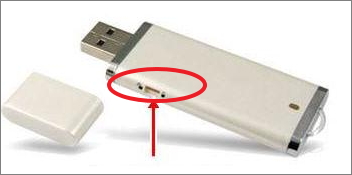
Image 2 - SD card lock switch
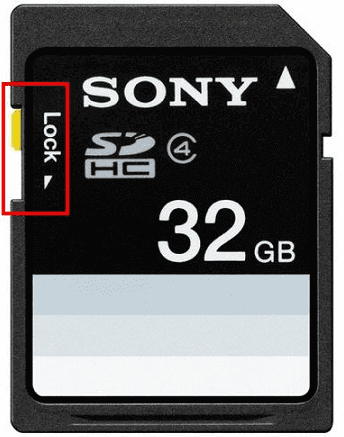
Note: If your USB doesn't have a switch or the system still warns your USB is write-protected, follow Method 2 below to remove the write protection.
Fix 2. Remove Write Protection from USB via Diskpart Command
This option removes the read-only attribute on your drive, making it writable. This works for your internal drives, external drives, USB drives, and even SD cards.
Let's find out how you can use the Diskpart command to fix the issue:
Step 1. Press Windows + R keys and type cmd in the box that opens. This will launch Command Prompt.
Step 2. Type diskpart in the Command Prompt window and press Enter.
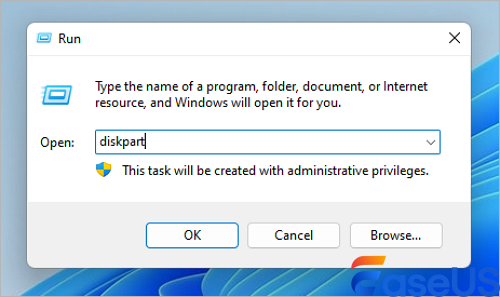
Step 3. Type list disk and press Enter to view the available disks.
Step 4. Type select disk 2 and hit Enter. Replace 0 with the write-protected device number.
Step 5. Type attributes disk clear readonly and hit Enter.
Step 6. Once you finish writing protection removal, type exit to quit Diskpart.
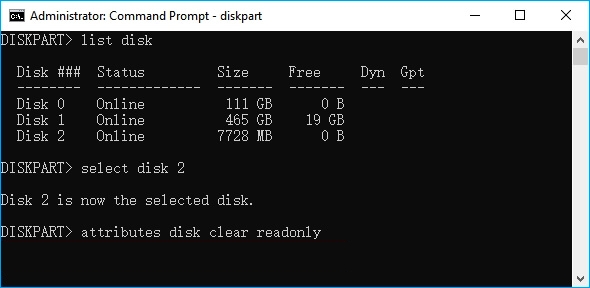
Afterward, restart your PC and verify that you can access and use the saved data on your USB drive or hard drive again. If you prefer a video tutorial, you can watch this video to fix the disk is write-protected error.
- 0:00 Start
- 0:35 How to remove write protection using Registry Editor
- 2:14 Remove write protection using CMD
- 3:27 Run EaseUS Partition Master

Fix 3. Remove Disk Write Protection from Using Registry Editor
Registry Editor also works to fix USB, SD, or internal/external HDD/SSD write-protected errors. It is an advanced-level procedure, and if you aren't sure what you're doing, you should probably not use this method. A wrong tweak to your computer's registry can cause many issues.
Step 1. Connect your write-protected removable device to the PC.
Step 2. Open the Registry Editor by pressing Windows + R keys, typing regedit in the Run box, and pressing Enter.
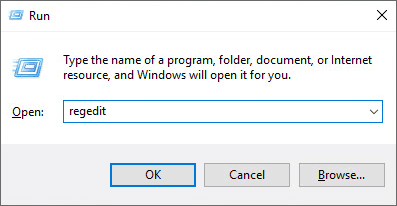
Step 3. Click on HKEY_LOCAL_MACHINE and expand System.
Step 4. Click Current Control Set and then click on Control.
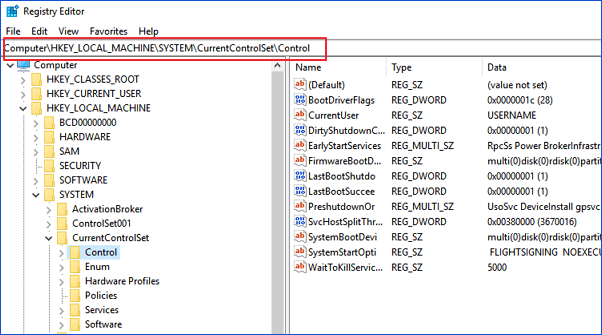
Step 5. Check Storage Device Policies and change the DWORD value to 0. Then, click OK.
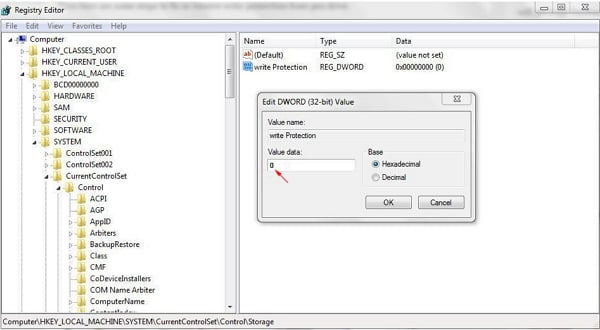
Step 6. Exit the Registry Editor and reboot your PC.
Wait for the computer to restart. Then, check if your device is accessible.
Fix 4. Turn Off BitLocker to Unlock Write Protected USB Drive
When BitLocker is enabled on your hard drive partition, it protects your files with encryption. To make changes to a BitLocker partition, you must remove the protection first. Here are the detailed steps to disable Bitlocker encryption and unlock your disk:
Step 1. Open File Explorer, right-click on your BitLocker partition or USB drive, and select Manage BitLocker.

Step 2. Select the locked device and click Turn off BitLocker.
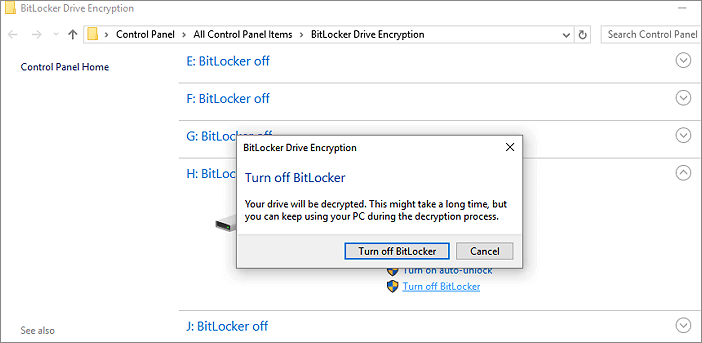
Step 3. Wait for BitLocker to decrypt on its own.
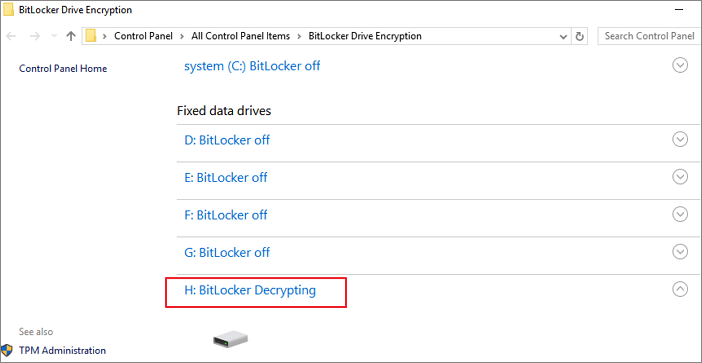
After this, with BitLocker off, you can manage data on your USB partition and save new files to it again.
Fix 5. How to Format USB Drive to NTFS or FAT32
To ensure your USB drive remains in good condition, format USB to NTFS or FAT32 file system.
To format the USB drive, connect it to your computer and format it with Disk Management using the steps below:
Step 1. Open the Run box by pressing Windows + R, type diskmgmt.msc in Run, and hit Enter.
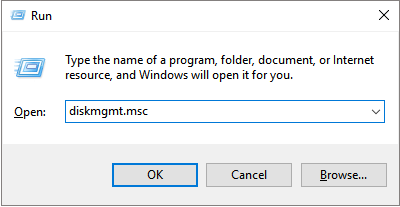
Step 2. Click Disk Management under Storage, right-click on your USB and choose Format.
Step 3. Select the format for your USB drive as FAT32 or NTFS and click OK to confirm.
(FAT32 for 32GB or smaller capacity; NTFS for 64GB or bigger capacity.)
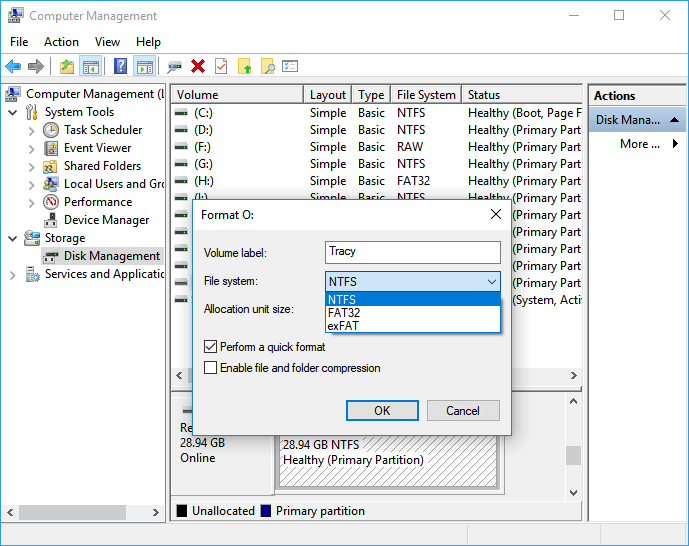
Fix 6. Antivirus Scan (Virus-Caused Protection)
Best for: Protection triggered by malware/virus.
Step 1. Disconnect the device from other PCs to prevent cross-infection.
Step 2. Use Windows Defender or a third-party antivirus (e.g., Malwarebytes) to scan the device.
Step 3. Quarantine or delete detected viruses/malware.
Step 4. Reconnect the device and check whether write protection is removed.
Recover Data and Format USB after Write Protection Removal
After removing write protection from your storage devices, you can access files and change your USB flash drive or external USB drive.
However, if files were lost or the USB is still inaccessible, follow the two tips below:
#1. Recover Data First If File Lost After Removing USB Write Protection
Download EaseUS Data Recovery Wizard to recover any lost data during the write protection removal. This software is also suitable for hard drive recovery, SD card recovery, USB data recovery, and more.
Step 1. Choose the USB drive to scan
Launch EaseUS Data Recovery Wizard and choose your USB drive where you lost important files. Click "Scan for lost data" to start.
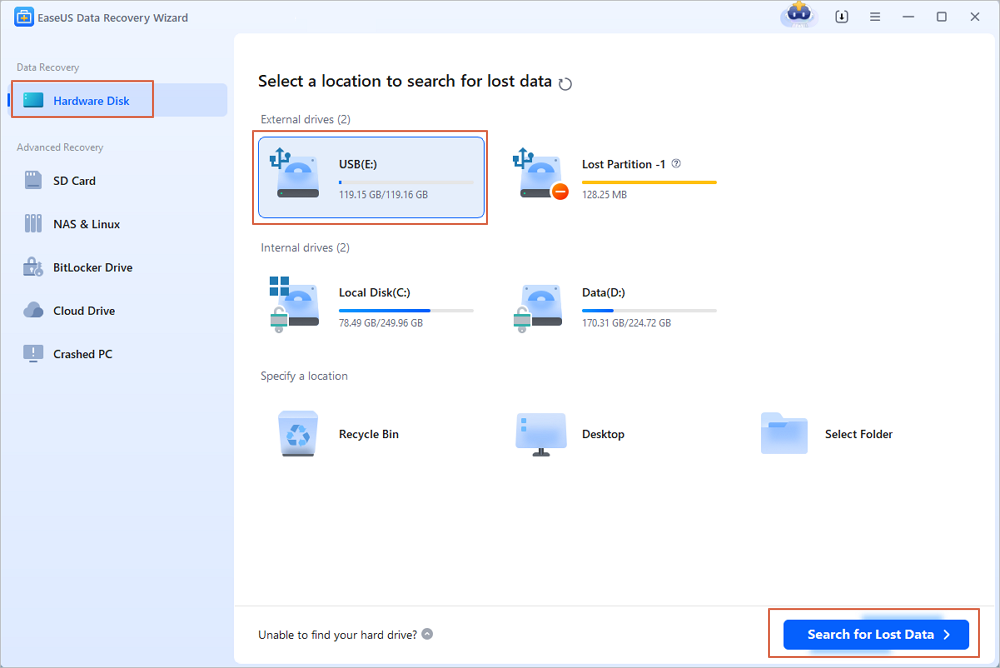
Step 2. Check and preview USB drive data
When the scanning is finished, you can quickly locate a specific type of file by using the Filter feature as well as the Search option.
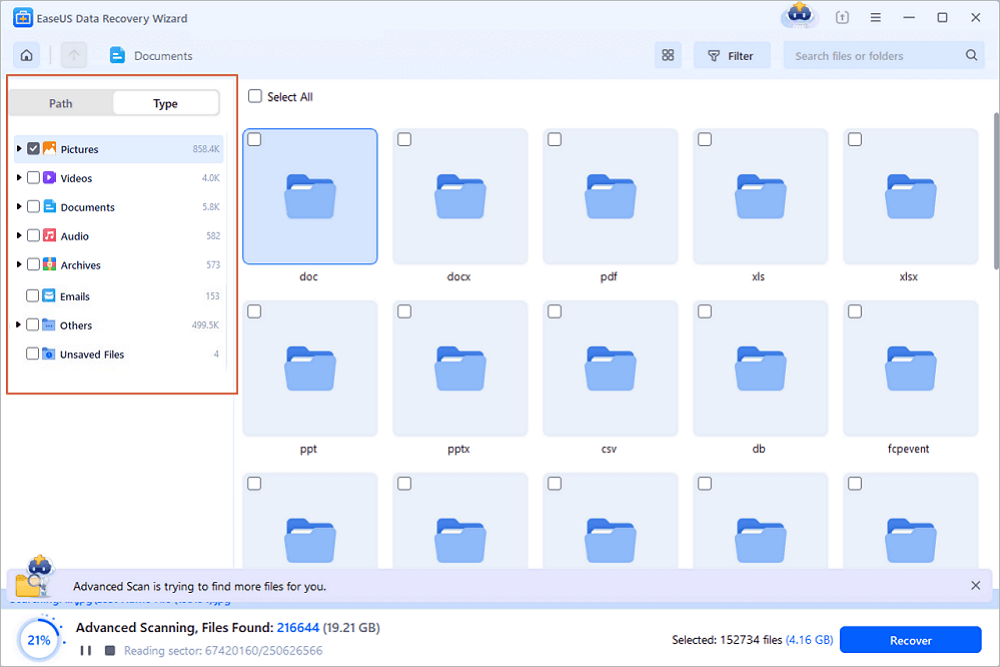
Step 3. Restore flash drive data
After checking and finding lost USB drive files, click "Recover" to restore them. You shall save the found files to a safe location on your PC rather than to your USB drive.
💡Tip: You can restore data on the local disks, external hard drives, and also the cloud storage.
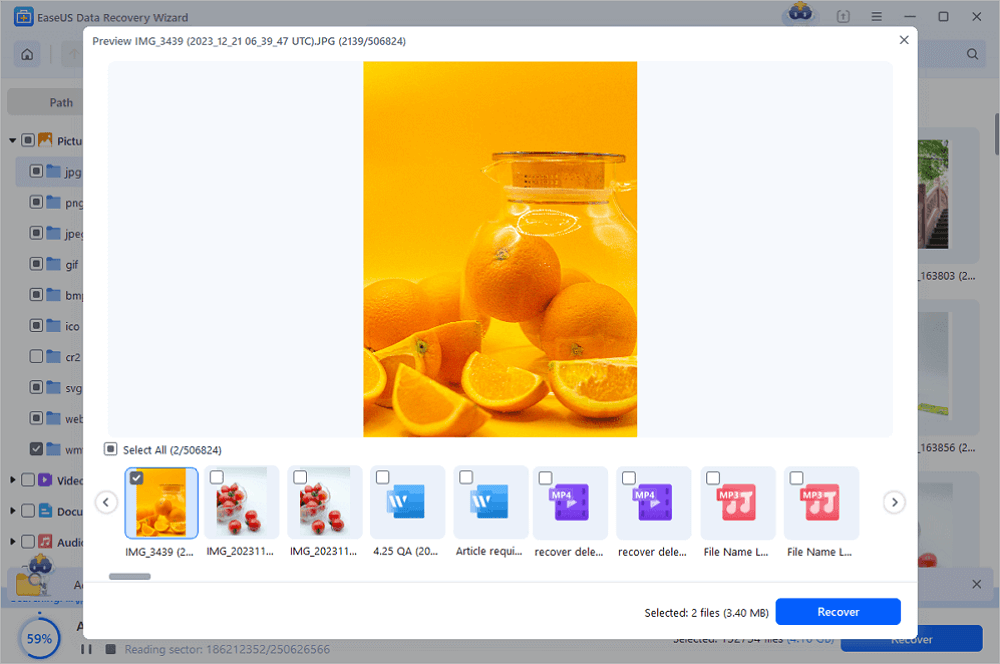
Conclusion
This page offers five methods to help you get rid of USB, SD, or internal/external hard drive write protection issues, including:
- 1. Swapping USB or SD card physical switch to the off state
- 2. Using the Diskpart command to clear read-only
- 3. Using the USB write protection removal tool
- 4. Changing registry DWORD value to 0
- 5. Turning off BitLocker partition encryption
If you're wondering how to remove write protection from a USB drive on Windows 11/10/8/7, the guide above is all you need to remove the write protection.
This Disk Is Write Protected FAQs
Below, we have listed some frequently asked questions and their answers to help you remove write protection from your storage devices.
1. How to remove write protection from the Micro SD card?
To remove write protection from your SD card, follow the quick guide below:
- 1. Run Command Prompt as administrator.
- 2. Type diskpart.exe.
- 3. Type list disk.
- 4. Type select disk + number.
- 5. Type attributes disk clear readonly.
Follow How to Remove Write Protection and Format Write-Protected SD Card guides for a more detailed guide.
2. How can I remove the write protection from a single file?
If your file or folder is locked with a read-only state, you can unlock it from the write protection state with the following tips:
- Right-click on the folder and select Properties.
- On the General tab, uncheck Read-only next to the Attributes section.
- Click OK.
3. How do you add write protection to a flash drive?
There are three ways to enable write protection on a USB flash drive:
- Use a USB write-protection switch.
- Use Diskpart to change read-only settings.
- Change security permission in USB properties.
4. How do I remove write protection from Seagate external hard drive?
Connect your Seagate external hard drive to your PC and remember its disk number. Open Command Prompt, type the following command one by one, and hit Enter each time:
- diskpart
- list disk
- select disk n (Replace n with the disk number of your write-protected Seagate external hard drive.)
- attributes disk clear readonly
Once you're done, if any files are missing from the disk, consider using a reliable Seagate data recovery tool to retrieve them.
Was this page helpful?
-
Jaden is one of the editors of EaseUS, who focuses on topics concerning PCs and Mac data recovery. Jaden is committed to enhancing professional IT knowledge and writing abilities. She is always keen on new and intelligent products.…
-
Mahesh is an experienced computer tech writer. He's been writing tech how-to guides for about 8 years now and has covered many topics. He loves to teach people how they can get the most out of their devices.…

20+
Years of experience

160+
Countries and regions

72 Million+
Downloads

4.9 +
Trustpilot Score


Free Data
Recovery Software
Recover data up to 2GB for free!

